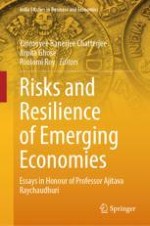2023 | OriginalPaper | Buchkapitel
Does Job Prospect Influence School Enrolment for Women in South Asia?
verfasst von : Saibal Kar, Archita Pramanik
Erschienen in: Risks and Resilience of Emerging Economies
Verlag: Springer Nature Singapore
Aktivieren Sie unsere intelligente Suche, um passende Fachinhalte oder Patente zu finden.
Wählen Sie Textabschnitte aus um mit Künstlicher Intelligenz passenden Patente zu finden. powered by
Markieren Sie Textabschnitte, um KI-gestützt weitere passende Inhalte zu finden. powered by
